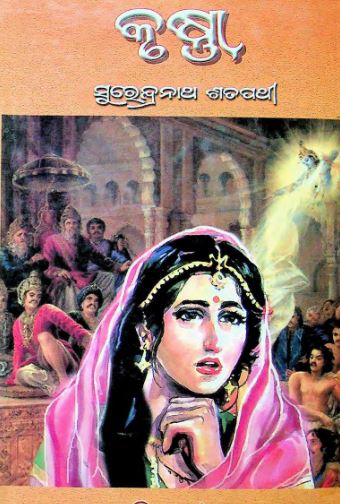In the rich literary landscape of Odia literature, few novels have left an indelible mark like Surendranath Satpathy’s “Krusna.” First published in 2004 and followed by a second edition in 2009, this intriguing narrative has captured the hearts and minds of countless readers. Combining elements of mythology, history, and psychology, Satpathy takes us on an exploratory journey through one of the most intriguing characters of Indian literature—Draupadi, from the epic Mahabharata.
“Krusna” positions itself uniquely as a sub-novel, an imaginative re-exploration of the sacred text of the Mahabharata. Through this lens, Satpathy delves into the enigmatic persona of Draupadi, one of the epic’s most formidable and complex characters, while also skillfully weaving in the symbolic presence of Lord Krishna. The writer employs a deft narrative style to present a coherent, yet multifaceted, portrait of Draupadi’s life, thoughts, and emotions.
Draupadi, known for her beauty, courage, and indomitable spirit, stands at the center of the narrative. Satpathy offers a nuanced look into her life, portraying her not merely as a queen, a wife to the Pandavas, or a cause of the great war but as a human being with intrinsic fears, desires, and aspirations. The author’s compassionate exploration of her psyche allows readers to see Draupadi not just as a mythological figure but as a relatable and tangible model of resilience and strength.
Parallelly, Krishna’s enigmatic and divine persona subtly interweaves through the narrative, guiding Draupadi through the labyrinth of her life. Satpathy’s portrayal of Krishna goes beyond the traditional depictions. He is a friend, a philosopher, and a constant source of wisdom and solace for Draupadi. Their unique relationship is portrayed with a depth that highlights the intricate layers of devotion, spiritual guidance, and philosophical discourse.
Satpathy’s language, rich in symbolism and lyrical quality, captures the very essence of the Mahabharata, yet personalizes it for the modern reader. His descriptive prowess paints vivid imagery, allowing readers to traverse the ancient halls of Hastinapur, the sacred grounds of Kurukshetra, and the serene banks of the Yamuna. The author’s ability to merge poetic eloquence with the innate sophistication of the subject matter adds to the novel’s timeless appeal.
A significant aspect of “Krusna” is its thematic depth. Satpathy tackles issues of dharma (duty/righteousness), power, justice, and the role of fate. Draupadi’s story, as presented in this work, becomes a medium for exploring timeless existential questions. Her unwavering pursuit of justice, despite facing monumental adversities, serves as an allegory for the perennial human struggle against injustice and the quest for truth.
Furthermore, the novel’s second edition in 2009 only reaffirmed its lasting significance and relevance. By revisiting and refining the narrative, Satpathy ensures that “Krusna” continues to resonate with newer generations of readers, strengthening its standing as a modern classic in Odia literature.
In conclusion, Surendranath Satpathy’s “Krusna” is not just a retelling of the Mahabharata but an intimate exploration of its characters, their motivations, and their struggles. Through the masterful storytelling, Satpathy breathes new life into ancient lore, making it profoundly relevant even today. For anyone interested in Odia literature, Indian mythology, or psychological narratives, “Krusna” is an essential read, offering a compelling blend of historical grandeur and intimate human drama.
Books Info
| Books name | Krusna/କୃଷ୍ଣା |
| Author | Surendranath Satpathy |
| No Of pages | 371 |
| Publisher | Vidyapuri |
| Publication | 2004, 2009, 2e. |
| Printed At | Inn Print |
| Distributor | NA |

